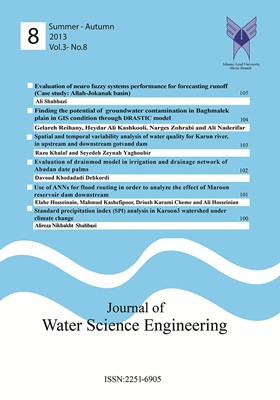-
-
List of Articles
-
Open Access Article
1 - Spatial and Temporal Variability of Water Quality for Karun River, in Upstream and Downstream Gotvand Dam
راضی خلف سیده زینب یعقوبی -
Open Access Article
2 - Evaluation of neuro fuzzy systems performance for runoff forecast (Case study: Allah-Jokanak basin)
علی شهبازی -
Open Access Article
3 - Finding the Potential of Groundwater Contamination in Baghmalek Pain in GIS Condition through DRASTIC Model
گلاره ریحانی حیدرعلی کشکولی نرگس ظهرابی علی نادری فر -
Open Access Article
4 - Evaluation of Drainmod model in Irrigation and Drainage Network of ABADAN Date palms
داوود خدادادی -
Open Access Article
5 - Study of Duckbill Weir with Triangular and Curved Plan Form
الهه حسینیان سید محمود کاشفی پور داریوش کرمی چمه علی حسینیان -
Open Access Article
6 - Standard Precipitation Index (SPI) analysis in Karoon 3 Watershed under climate change
علیرضا نیکبخت شهبازی
-
The rights to this website are owned by the Raimag Press Management System.
Copyright © 2021-2025







